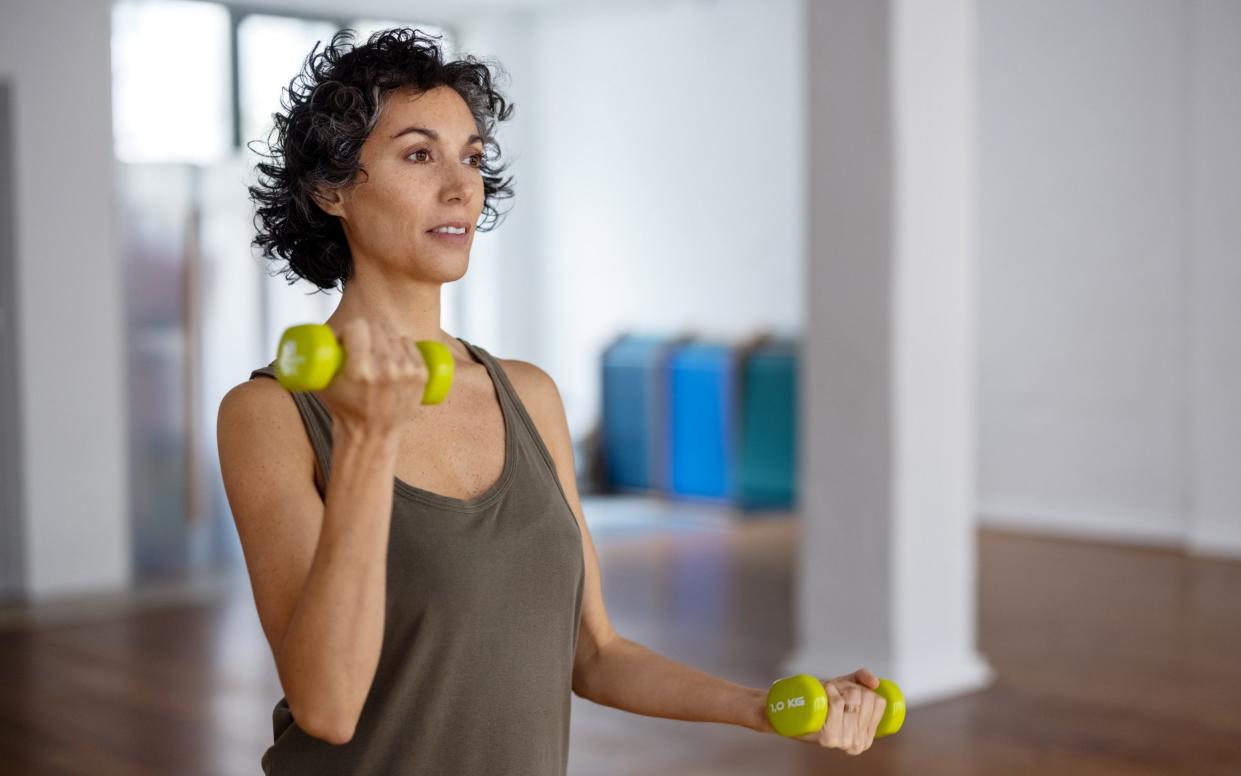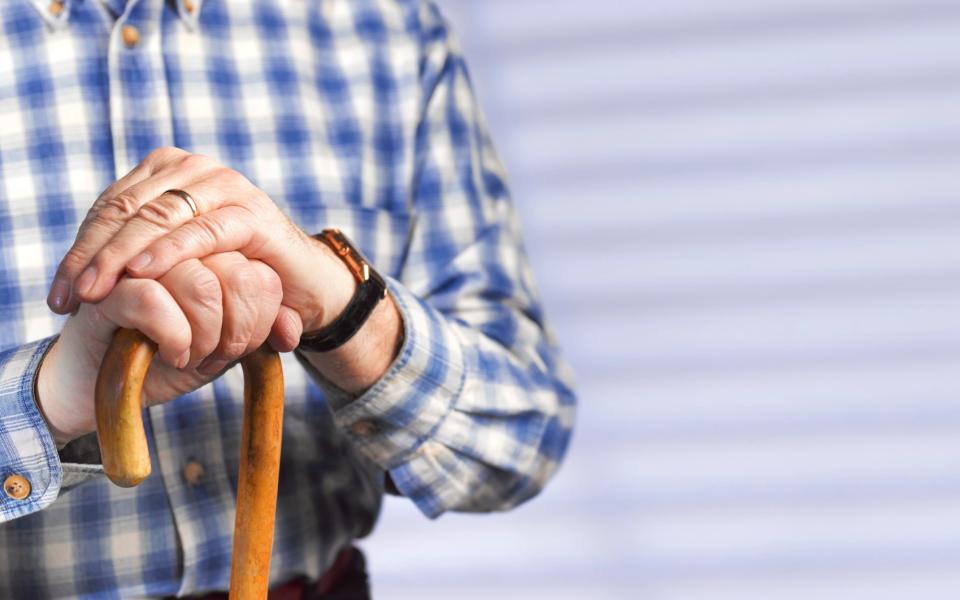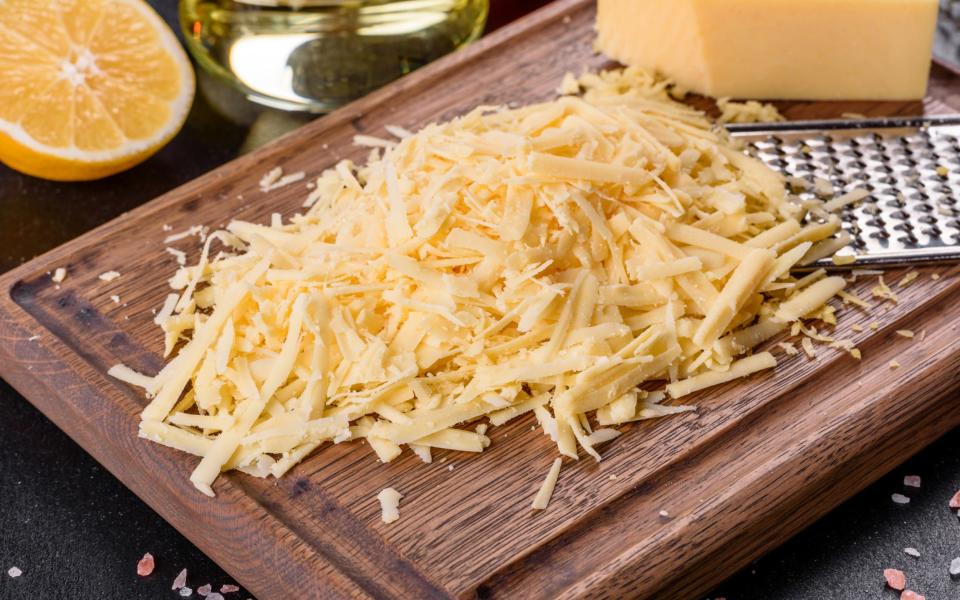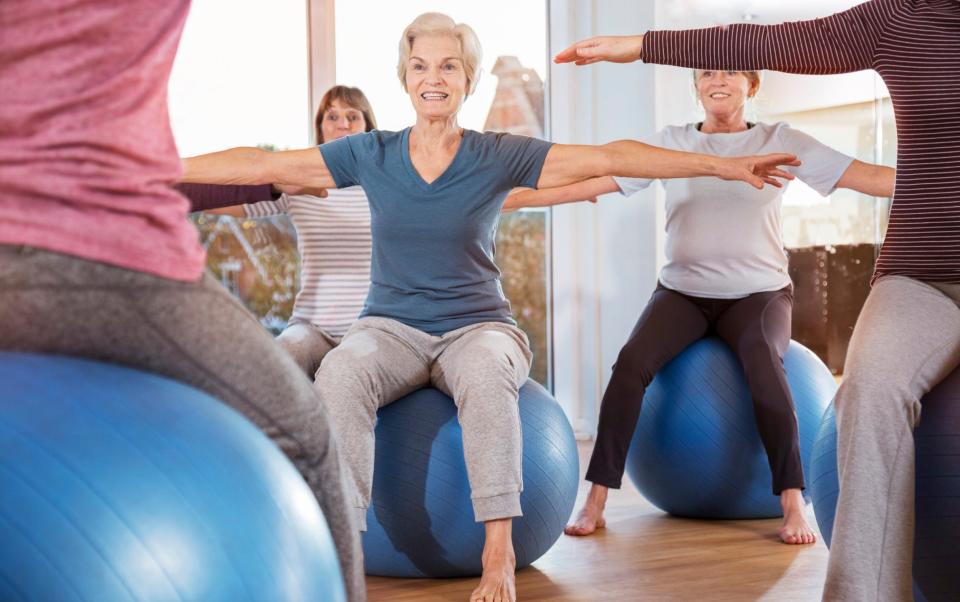How to stay strong and beat the decline to frailty

Of all the widely discussed physical signs of ageing, there’s one that often slips under the radar: the moment “falling over” turns into “having a fall” – and we start to take the repercussions seriously.
With around one in three adults over 65 having at least one fall a year and around 10 per cent of people aged over 65 living with frailty, you might think 65 is the age where there is a subtle shift in our physical and mental resilience. But frailty is independent of age, says Adam Gordon, professor of care of older people at the University of Nottingham and the president of the British Geriatrics Society.
“There’s a real stigma around the term ‘frailty’ – people feel alarmed if they’re called ‘frail’ – but it is a helpful measure for us that means we can help people at any age get the support they need. While much of the research around frailty does tend to be conducted on those over 60, I have met 85-year-olds who cycle to my clinic and go on camping holidays and 60-year-olds who struggle with their mobility,” says Gordon.
“Frailty is a well-defined medical term that measures an individual’s vulnerability to acute injury and how well someone recovers following a fall or an infection. GPs can measure frailty using the electronic frailty index – a number calculated by how many conditions an individual is dealing with, which acts as an indication of their vulnerability.”

Other measures a GP can check are walking speed, grip strength, levels of exhaustion and weight – all factors that tend to decline as the natural ageing process takes hold and we lose grip strength, feel more exhausted and walk more slowly. Underpinning this decline is sarcopenia, the gradual loss of our muscle mass and muscle function after we turn 30. Then, from the age of 40, we lose bone mass and density as the protein and mineral content of bone tissue reduces, with women losing more bone mass during menopause due to the loss of oestrogen that stimulates bone tissue.
NHS GP and personal trainer Dr Amos Ogunkoya says frailty is something that he keeps an eye on as a GP in an ageing population so he can offer the right support. “Frailty is amenable to change and with structured care, you can reverse it,” he says. “It doesn’t have to be an inevitable part of ageing; instead, we should view it as a challenge that we can overcome. People need to realise that to have a functional life in older age, they need to be living an even more functional life now.” Dr Ogunkoya’s book on the subject, When Past You Rewards Future You, is out later this year.
Here are ways you can prepare your body to avoid becoming frail:
Eat an apple a day
A recent study of 1,701 participants over 12 years published in the American Journal of Clinical Nutrition looked at the link between frailty and dietary flavonoids – compounds found in fruit and vegetables. Researchers found that a higher intake (10mg per day, to be exact) of flavanols – a subclass of flavonoids – was linked with 20 per cent lower odds of frailty onset. They also found that a higher intake of a particular type of flavonoid called quercetin – found in apples and berries – was associated with 35 per cent lower odds of frailty onset.
Registered associate nutritionist and food writer Lucy Jessop points out other lifestyle factors at play here that are also worth noting. “Usually, those who follow a healthy diet also employ other healthy lifestyle behaviours, such as taking regular exercise, not smoking, not drinking alcohol to excess and keeping to a healthy weight – all factors that have a hand in keeping you mobile as you age.”
The study just adds more weight to the rationale behind getting our five a day of fruit and veg, says Jessop: “It’s key because of the variety of micronutrients – vitamins and minerals – they provide. Potassium and flavonoid intake from fruit and veg have been positively associated with both good bone and muscle health into older age.”
Bolster your bones with calcium and vitamin D
“Getting enough calcium and vitamin D really matters throughout your youth and middle age to reduce the risk of frailty later in life,” says Jessop. “Oily fish, milk, eggs, meat, butter and fortified breakfast cereals are all sources of vitamin D, and the best sources of calcium are found in dairy products such as milk, cheese and yoghurt, as well as spring greens such as kale.”

The other key solution to boosting vitamin D naturally is to spend more time outdoors and exposing your skin to UV light. “Exposure to sunlight of a particular UV strength is needed to convert the vitamin D under our skin into a form that can be used in the body,” explains Jessop.
“And because during winter it’s not possible for us to get enough vitamin D, we recommend taking a vitamin D supplement of 10 micrograms (400IU) each day to avoid deficiency. For older adults who perhaps spend more time indoors or tend to keep their skin covered, the advice is to take this supplement every day all year round,” Jessop adds.
Do resistance training twice a week
“Resistance training is such an important thing because your body works on a use it or lose it policy,” explains Dr Ogunkoya. “The cells in your bones can regenerate minerals when they’re put under stress. When you load the skeleton – as you do in strength training – that creates stress and stimulates bone tissue to regenerate.
It’s the same for muscles. If you don’t use a muscle for a while – and you’ll see this if you’ve ever had your arm in a cast – then you lose it. You can lose about two weeks’ worth of muscle gain in 10 days.”
Our muscles play a vital role in how we use energy, too, explains Prof Gordon. “We know that loss of muscle mass and function is central to frailty, because as well as enabling us to move, they’re integral to the metabolic processes that keep us fit, independent and healthy.”
Whether you’re lifting dumbbells, tins of baked beans or your own body weight on an exercise ball, resistance training – also known as strength training – involves lifting or pulling weights in some form, and you can start at any age. In a review of 33 studies on the effects of resistance training in elderly people, researchers at University of Potsdam, Germany concluded that resistance training in those aged 60 and over increases muscle strength.

“Muscle is the key to longevity, in my eyes,” says Lavina Mehta MBE, a personal trainer who runs free senior workout sessions online every Friday. Including low-impact strength, mobility and balancing exercises using household items like tins, bottles and rucksacks, Lavina runs the classes alongside her 75-year-old mother-in-law, who demonstrates chair-based versions of the moves for those who are less mobile. “I’d encourage anyone over 30 to start strength and resistance training. Start off with your own body weight and then add weights when you’re ready to progress. It’s all about progressive overload. We should all be making sure that strength training is a part of our exercise regime twice a week at least.
The king of lower body exercises is the simple sit-and-stand to keep the muscles active and strong. As you progress, you can start adding weights. For your upper body, start with wall press-ups to build strength.”
Don’t stop moving
Prof Gordon explains that frailty is often accompanied by feeling socially isolated and having poor mental health as a result of being less mobile. “Doing a small amount of movement – even if it’s walking to the corner shop and carrying your shopping home really is the best treatment for it as the individual builds up confidence,” he says.
Mehta agrees that getting frail has a psychological impact. “I see it with my own parents – it can make them feel very down and they lose self-esteem and confidence. The lack of confidence becomes a barrier and they start doing less because they’re worried about having a fall and being able to recover from it. It’s why, in my Feel Good senior workouts, I include breathing exercises – as a tool that might help their mental well-being, too.”

 Yahoo News
Yahoo News 
